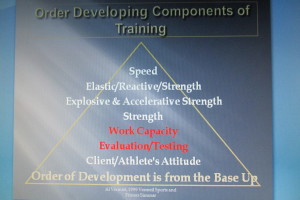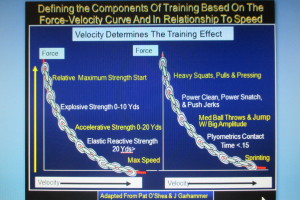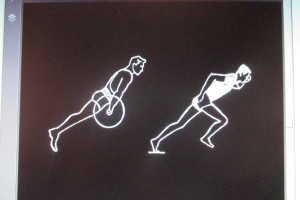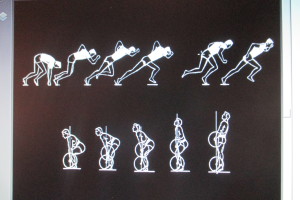When designing a successful program the Gibbons push-pull methodology leads our planning process. Our strength staff starts with these two questions:
1. What is the needs analysis for the individual or the sport?
2. How do we use our systematic methods to guide someone through the training?
A personal story to illustration this topic came in 2010 when I was fortunate to meet the strength coach for the Portland Trail Blazers Bob Medina. Coach Medina is a passionate speaker that encouraged us to have a methodology written out to present to our organizational leader as he did when taking the job at the Trail Blazers. From this idea I generated a portfolio I use today to guide our strength and conditioning staff.
Another presenter, Vern Gambetta, challenged the participants to put their methodology down on one page of paper. It sounds easy but it took me awhile to successfully accomplish this activity! Now I practice this activity with our staff.
At Cardinal Gibbons we use this simple push-pull methodology to design our programs. We teach proper lifting technique, monitor
the program, and educate participants on
the principles of optimal nutrition.
Gibbons STRENGTH approach includes:
1. Bring a positive attitude
2. Manage weekly volume
3. Efficient organization of the program
4. Monitor the training process
5. Practice sport science-based program design
Master Strength Coach Al Vermiel has coached NFL, NBA, College, and High School students. His first rule is creating a positive environment through the right attitude. (Figure 1.)
Our strength staff manages the weekly volume of each participant using sophisticated software that monitors all aspects of the warm-up, exercises, circuits, running, and cool down.
The main basis of managing program design is choosing correct exercises and timing. We use 3 types of weekly programming routines: 4-day split, 3-day split, and 2-day split. Any of the split routines include a lower body and upper body emphasis on pushing or pulling movements. The human body is divided into 4-quadrants with upper body pushing and pulling movements and lower body pushing and pulling movements.
For example: a lower body push would include a Parallel Squat while a lower body pull from the hip would include an Romanian Deadlift . The upper body, an example of a pull would be a pull-up and push would be an Incline Bench Press. This approach provides adequate recovery between muscle groups.
Each workout is programmed using sports science-based evidence that is centered around the velocity of the exercise. All exercises are not created equal on the Force Velocity Curve. The equation does gives us guidance to the sports season and training target: 
POWER = FORCE X VELOCITY
——————–TIME
If the target in training is low-end strength then squats are used but if the target is speed than high-end velocity is the focus. A program can’t focus on every target at the same time. Strength is the primary target for year-round program and power and speed is trained when appropriate for specific individuals and sport teams (Figure 2. Credit to Al Vermiel, 2010 Basketball Symposium)
Some exercises such as the Power Clean and Kettle bell swings correlate well with the needs analysis for many sports. Clean Deadlift is a centerpiece of our program that begins the power clean movement and allows the triple extension of the ankle, knee, and hip (Figure 3).


Our staff practices the periodization of overload, variation, and specificity over 4-6 week training blocks. We have found this can increase the rate of force development (RFD) someone can generate. Our staff also promotes strong communication in the goals of the strength and conditioning program so participants can consistently reach higher levels of optimal health and performance.
In summary, the Push-Pull methodology manages training loads that promote strength gains for staff, students, and student-athletes to reach their goals for optimal health while creating a positive environment that will foster championship progress!
Chris Morland, MS, CSCS, SCCC, USAW
